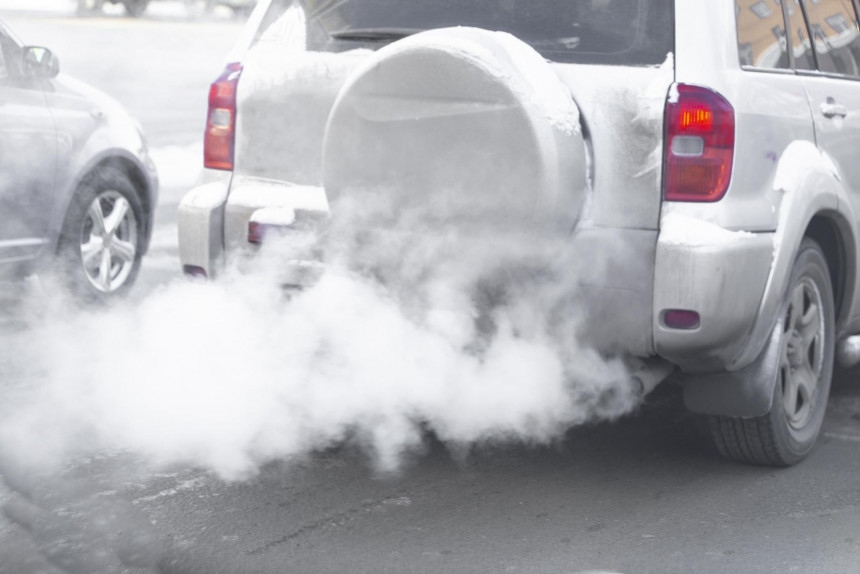The electric car program will have no impact on the climate

By spending €10 million, the government plans to increase Latvia's car fleet by 3,800 cars, but there is no reason to fear that this will have a significant impact on emissions and the amount of waste generated will also be minimal, as wealthy people do not drive around with junk cars and it will be more profitable to sell these cars on the secondary market rather than scrap them.
The government's program to reward the wealthy people, car dealers and lessors, adopted at the last meeting of the year, is hidden under a rather complicated title: "Regulations for the open call for proposals for projects financed by the Emissions Trading Instrument 'Reduction of greenhouse gas emissions in the transport sector - support for the purchase of zero- and low-emission vehicles.'" This program will have virtually no impact on the global climate and will harm the environment only through a small increase in the number of cars. It should be recalled that the program will only subsidize electric cars and plug-in hybrids, which emit a lot of emissions only at the point of manufacture, but close to zero emissions in the rest of their life cycle. The internal combustion car scrappage subsidy, on the other hand, is unlikely to be used as it will be significantly less than the residual value of the car. The program will therefore result in both newly purchased cars and cars previously used by participants being in active use, but with a change of ownership.
1t CO2 / €204
The calculation is simple. New electric cars are expensive and can be afforded by people with higher incomes. They are unlikely to be driving cars costing less than €1,000 at the moment. And this, by the way, is also mentioned in the annotation of the Regulation: the value of the vehicle to be scrapped may be significantly higher than the planned compensation of €1,000 for recycling the previous car. But even such a classic as a ten-year-old Golf costs around €5,000. This means that it will be more profitable for a participant to accept a government gift of €4,500 for a new electric car or €2,250 for a hybrid and sell the Golf or give it to a relative. A well-maintained internal combustion car will be safe to use for just as long, unless the ruling coalition decides to ban internal combustion engines by law. As for the government's intention to reduce Latvia's overall emissions through this program, this is just a smokescreen for giving unethical gifts to the wealthy. Against the background of total emissions, the reduction will be minimal and inadequately expensive. The annotation to the Cabinet Regulation states that the measures will reduce CO2 emissions from the transport sector by 49,000 tons over a five-year cycle. So, an average of €204 per ton will be spent on combating it. However, if the program only buys new electric cars, which is theoretically possible, the costs will be even higher.
Maximum savings - 0.4% of emissions
In the case of a new electric car, the total cost of CO2 reduction (direct support for the purchase of the car and indirect support in the form of uncollected excise duty) is €364 per ton of CO2. Neatkarīgā has already reported that "Giving gifts to the rich to reduce CO2 is inadequately expensive." One might think, however, that the considerable investment is justified by the emissions avoided. But against the background of total emissions, there is not even a one percent gain. Latvia's light car fleet will emit 2.42 million tons in 2021. This is according to the Automobile Association. The Ministry of Environmental Protection and Regional Development forecasts that the program will result in greenhouse gas emission reductions of around 9,800 tons of CO2 per year for the vehicles purchased under the tender. This is 0.4% of total car emissions, and even this figure is under a question mark if internal combustion cars are put on the market rather than being scrapped. The Ministry of the Environment refrains from predicting the number of cars to be scrapped:
"Every citizen has the right to dispose of their property - an existing vehicle - freely and at their own discretion." However, a formal incentive mechanism for the retirement of used internal combustion engines will be proposed.
Sustainability is of no interest here
The recycling and waste aspects of end-of-life cars are not covered at all in this story. As the Ministry explains: "No life cycle analysis, including waste volumes and types, has been carried out (was not required) for vehicles when drawing up the tender specifications for these projects. Waste is not generated at the time of purchase. However, if a citizen owns an existing vehicle and wishes to scrap it, it will have to be handed over to a waste treatment company in accordance with the End-of-Life Vehicles Management Act.
Even the authors of the Cabinet Regulations do not believe that the program will result in 3,800 cars that are still in good working order being scrapped, and even if it did, such a number would not be very large for the size of the total light car fleet. Currently, there are more than 739,000 cars on the roads and in the garages in Latvia. In summary,
an investment of €10,000,000 will not have a significant impact on either the climate or the structure of the Latvian car fleet.
Only the public transport lanes in Riga will be more obstructed to public transport, and the deficit in the state budget will not be reduced by a corresponding amount. But this is of little concern to anyone in government.
*****
Be the first to read interesting news from Latvia and the world by joining our Telegram and Signal channels.